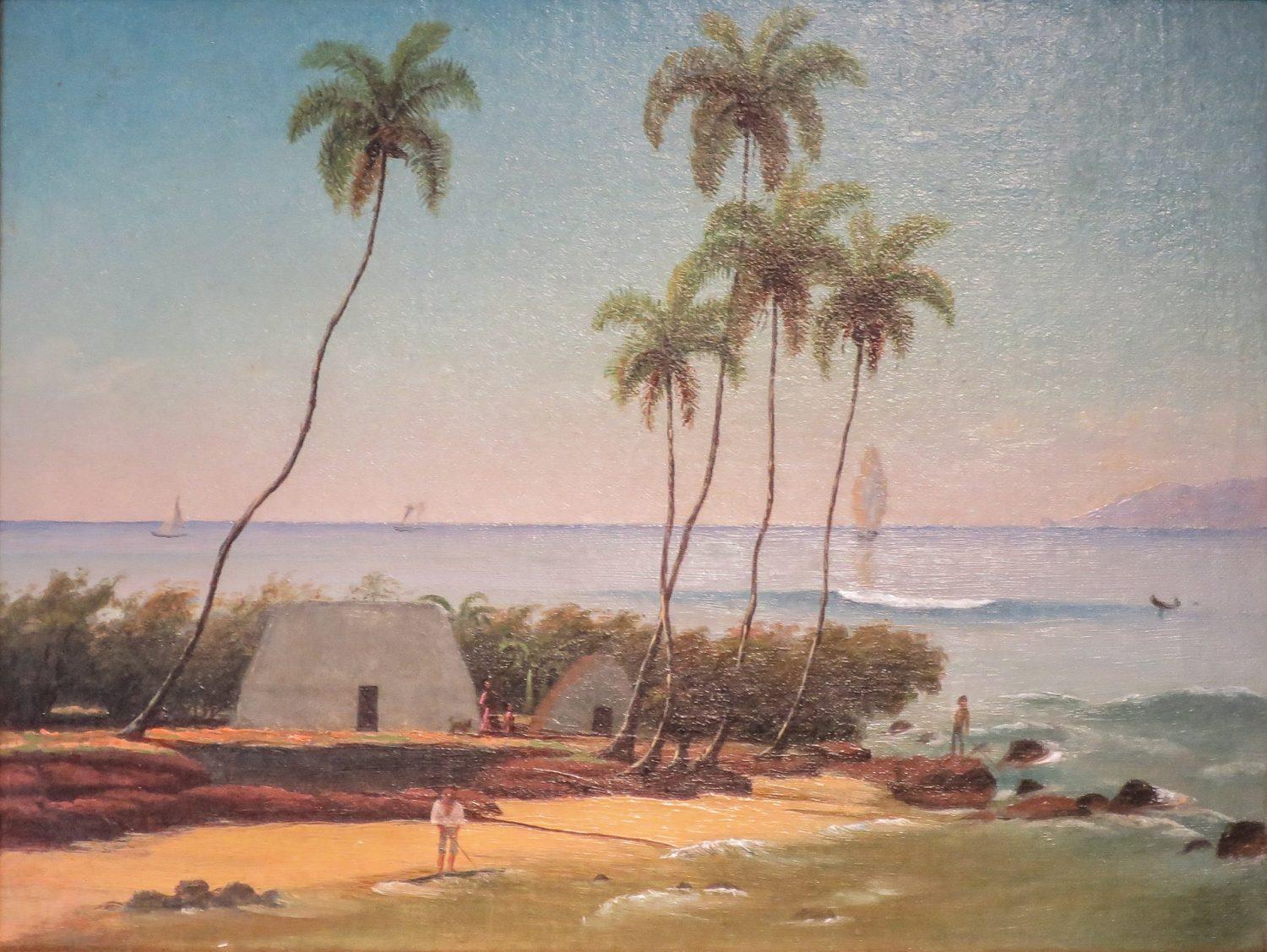
Hana Ancient History
Maui’s History Along The Road To Hana
Ancient Hawaiians were a people without writing who preserved their history in chants and legends.
Maui’s ancient history, as with all the islands, was passed down through close to 100 generations by the kahuna priests of old Hawaiʻi. Hana, on the eastern side of Maui, has some of the richest and most vibrant history of the entire Hawaiian island chain.
Empires were born in Hana, and many battles were fought here, not just for the right to rule Maui but also for the conquest of the entire island chain. Hana was invaded many times by the Alii (Royalty/Rulers) from the Big Island of Hawaiʻi, and it was told in the mo’olele (legends) that kings from both Maui and the Big Island attempted to rule Maui from the lush paradise of Hana.
What exists of ancient Hawaiian history today is largely taken from what was chronicled by the first sea captains to arrive in the late 1700s. By the early 1800s, missionaries had built the first school west of the Rockies – Lahainaluna Seminary School. Soon they shipped in a printing press from Honolulu to Lahaina. Missionaries helped translate the native language into simple letters and began printing the first Hawaiian language newspaper in 1834. Information about ancient life in Hawaii began to be gathered around this time from the living Hawaiian descendants who still remembered the ancient stories and chants.
Many of these accounts and stories are archived at Bishop Museum in Honolulu.
As you travel along the road to Hana keep in mind that this part of Maui is not only stunningly beautiful but that it is also the scene of many amazing stories of life in old Hawai’i. The reverence Maui’s residents have for Hana is anchored in their ancient connection to the land and the stories of their ancestors. It would be a challenge for anyone to learn about the many accounts of Maui’s ancient history as it would take reading many books and accounts – something not easy to do on vacation. It is best to take a Hana tour with a knowledgeable guide who can point out the places and stories that connect the ancient history of Hana with modern day Maui.
In ancient Maui, Hana was a lush area favored by the Alii (royalty) and became the seat of power for the entire island. Until the mid 1400’s, Maui was divided into three territories with different rulers: Wailuku (Central Maui), Lele (West Maui), and Hana (East Maui).
Around what is estimated to be the 1550’s, King Pi’ilani, Moi of west Maui, married the daughter of Hana’s chief Hoolae, resulting in the unification of East and West Maui. Peace and prosperity were experienced during this king’s reign and he was much loved.
Pi’ilani’s greatest accomplishment was that he commissioned many significant “public works” projects. It took many years of hard labor to complete the building of fish ponds, irrigation fields and a stone paved trail some 4 to 6 feet wide that circumnavigated the entire island. This trail called the “King’s Trail” traverses much of today’s Road to Hana in its eastern portion. The completion of this road united the villages and chiefs of the island and Maui became one of the most powerful islands in the Hawaiian island group. So powerful in fact that conquering and controlling the Hana district became a major goal of the Big Island of Hawaii’s Ali’i (royalty),including Kamehameha The Great and eventually even Maui’s king Kahekili.
By the early 1600s, Hana was under the control of Big Island ali’i through the marriage of Hawai’i’s moi and a Hana princess. It was cause for much contention from Maui’s Ali’i Moi (king) Kahekili ll who’s army had conquered of the islands of Lana’i, Molokai, and Oahu. Control of Kauai was negotiated marriages between the ruling families of these two islands, but by the mid-1700s the almost constant battles being waged between the Big Islands Ali’i Moi (king) Kalaniopu’u and Kahekili began to strain the resources of Maui.
The first European explorer to see Maui was Captain James Cook on November 26, 1778, when he and his two ships anchored offshore of Kahului. However, he did not come ashore on Maui. As Cook sailed down Maui’s northeastern coastline, a royal double-hulled canoe approached from the Hana coastline. In it was Hawai’i Island’s Moi (king) Kalaniopu’u along with his nephew, Kamehameha. Cook writes in his journal, along with other crew members, of the large and intense looking Kamehameha who spent the night on the ship observing the new western weapons. The next day they sailed on towards the Big Island were captain Cook met his fate in Kealakekua Bay several months later in 1779.
On May 29, 1786, it was French Admiral Jean-Francois de Galaup La Perouse who became the first westerner to set foot on Maui by landing on the shores of Keone’o’io Bay, what is now known as La Perouse Bay. As he passed by the Hana and Kaupo districts, hundreds of canoes came out to greet him, and he made a note of the kindness and beauty of the people and their agricultural skills.
Less than a decade after the first western contact with Captain James Cook in the Hawaiian islands King Kamehameha began to procured canons and armaments from the arriving foreigners. Having fought for many years trying to unite all the islands under one government, Kamehameha now had the upper hand.
Kamehameha and his army built a fleet of war canoes which were estimated to have numbered close to 1000 strong. By 1790 tens of thousands of warriors and their families, who traveled in support of the army, traversed the channel between Hawai’i and Maui. A great battle took place at Iao Valley in which Kahekili’s Maui army, commanded by his son, was defeated with Kamehameha’s use of cannon and musket.
As you travel the road to Hana just imagine the scene of 1000 war canoes offshore! It is said that the regatta stretched almost all the way back to the Big Island as it arrived in Maui!
Ancient battles were fought in Hana at points stretching the entire length of the Hana coast.* Their arrival was sounded by messengers who ran the foot paths from Kaupo to Hana and beyond announcing the call to arms. It is said battles often raged for many days along this rugged coastline as Hana’s warriors repelled the invaders many times throughout the centuries.
One account speaks of Maui warriors who were skilled in the art of slinging stones. * It was said they could throw stones 100 to 200 yards from shore accurately enough to kill warriors and damage canoes. As you travel through Hana town look for a steep hill at the southern end of Hana Bay. This is Ka’uiki Hill, and in ancient times it was a fortress which was the fallback position for Hana’s ancient residents and warriors in times of invasion.
The battle for Maui’s rule ended when the island was conquered by Kamehameha and his massive fleet of warriors and western armaments. His army chased the Maui warriors into Iao Valley along the eastern shore of the West Maui Mountains and it was such a bloody battle that it is said the bodies dammed up Iao Stream which ran red with blood all the way to Wailuku! It took Kamehameha several more years of war, including putting down a revolt on his home island of Hawa’ii, but he finally won control of all the islands by 1810, effectively ending an estimated 100 years of war between the islands. Though Hawaii has seen massive changes brought by the arrival of westerners, peace has reigned among the islands and native Hawaiians ever since being united by Kamehameha.
Kamehameha set up his new Kingdom of Hawaiʻi in the village of Lahaina, known then as Lele. He married into the Maui Alii (royalty) by taking a wife, Kaahumanu, who was born in Hana. This is how the conquering Alii of Hawaiʻi cemented their control of the community through social and political structures. Lahaina remained the capital of the new Hawaiian Kingdom from 1802 until it was moved to Honolulu in 1845.
Kamehameha began trading with the foreigners after conquering the Oʻahu chiefs. At first the main export was salt, but soon it was overshadowed by the sandalwood trade which destroyed the three layered canopy rainforest covering the mountain slopes of every island within a few short years. With the proceeds Kamehameha built an estimated 30+ European style ships.
Some of the first westerners to arrive in Maui observed a well-organized caste society. The Hawaiians had mastered many aspects of living including the creation of stone tools and an incredibly strong rope made from coconut fiber. The concept of private property was unknown to ancient Hawaiians, but they did have an ingenious system of land management known as an Ahupua’a. From the top of the mountains to the sea, each district had its resources of forests, gardens, and fishponds which sustained an estimated 250,000 natives on each island!
Several of the early sea captains who arrived in Maui saw the rich resources of Hana as a way to make a living and began cultivating the sugar cane which grew wild there. Eventually, Hana was the location for one of Hawaiʻi’s first sugar cane mills in 1849. By 1883 there were six in the area. The original trail constructed by Hana’s Chief Pi’ilani hundreds of years earlier was finished as a roadway in 1926. It is what we call the road to Hana today.
So as you travel the road to Hana keep in mind that this area was the cornerstone of an ancient struggle to control all of the Hawaiian group of islands. Please travel with the same respect and reverence that the Hawaiian people have for this sacred landscape.
A Brief Chronology of Hana History
• 1550 (est) – Maui Chief Pi’ilani rules Hana in a time of peace and prosperity. He orders the building of a trail system circling Maui, thus uniting the entire island.
• 1759 to 1779 – Kalani’opu’u of the Big Island captured and held power over Hana. Eventually, West Maui chief Ka’hekili surrounded him and forced Kalani’opu’u to retreat to defenses on Ka’uiki Hill. Ka’hekili defeated him by stopping all freshwater flow to the hill and forcing them to surrender.
• 1768 – Queen Ka’ahumanu was born in a cave at Ka’uiki Hill. She was King Kamehameha’s favorite wife and mostly responsible for the abolition of the Kapu System.
• 1790 – King Kamehameha invades Maui and conquers the island with the help of British armaments.
• 1794 – King Kamehameha brings all the island under his rule and establishes Lahaina as the capital of the Hawaiian kingdom.
• 1849 – Sugarcane is introduced to Hana via a sugar mill by George Wilfong. In 1883, there were six plantations in operation before this Hana and the neighboring Ko’olau districts survived by cultivating dryland taro and local fishing.
• 1926 – The original Hana Highway was completed. It was a gravel 1-lane road.
Sights of Maui by Elspeth P. Sterling – Bishop Museum Publishing
*Moses Manu, The Story of Kihapiilani, Ka Nupepa Kuokoa, Aug. 9, 1884. MS SC Sterling
*S.M. Kamakau, Ruling Chiefs of Hawaiʻi, Translated from the newspaper Ke Au Okoa 1961 SC Sterling
*Abraham Fornander, An Account of the Polynesian Race: Its Origins and Migrations London 1876-85
*Pi’opi’o State Park signage- Hilo, Hawaiʻi – Kamehameha Schools Alumni Association, Mamalahoe Chapter
Hana History Timeline
1024 – Carbon dating of ruins in the Kipahulu area of Hana establishes it as one of the first areas of Polynesian settlement on the island of Maui. Over the next 300 years the island would become populated throughout the low lying areas with villages and rulers who were independent of each other.
1570s (est) – Maui Chief Pi’ilani rules Hana in a time of peace and prosperity. He orders the building of a road system circling the island, thus uniting the entire island. Hana’s Pi’ilani Heiau is built which is the largest Hawaiian Temple in the island group and can be visited today.
1759 to 1779 – Kalani’opu’u, Moi (king) of the Big Island, captured and held power over Hana. Eventually, Maui King Kahekili surrounded Hana and forced the Big Island chiefs to retreat to defenses on Ka’uiki Hill. Kahekili defeated them by stopping all freshwater flow to the hill. The Ali’i (chiefs) escaped, returning to the Big Island but the remaining villagers are slaughtered.
1768 – Future Queen Ka’ahumanu was born in a cave at Ka’uiki Hill in Hana. She became King Kamehameha’s favorite wife at age 16 and largely responsible for the abolition of the Kapu System.
1778 – Captain Cook and his two ships anchored in what is today’s Kahului Bay and meet with Maui’s King Kahekili. Days later while sailing along Hana’s coastline his ships are met by King Kalani’opu’u and his nephew Kamehameha who approached in royal double hulled canoes. Kamehameha spends the night on the ship studying the English ship and it’s armaments. The following day the ships sail on to the Big Island.
1790 – King Kamehameha invades Maui and conquers the island with the help of western armaments.
1802 – Kamehameha rebuilt several Maui Heiau to honor his war god, Kuha’ilimoku, and went on to conquer all of the Hawaiian Islands.
1849 – Sugarcane cultivation is introduced to Hana when George Wilfong built the first sugar mill.
1883 – By this year there were 6 plantations in operation. Before this, the area of Hana and the neighboring Ko’olau districts survived by cultivating dryland taro and local fishing.
1926 – The original Hana Highway and bridges were completed. It was a gravel 1-lane road.
1940 – Hana is a bustling town, population 3,500. There are two movie theaters, 15 different stores, three barber shops, a pool hall and several restaurants.
1946 – Paul Fagan starts The Hana Ranch with 14,000 acres of land and a herd of Hereford cattle from Molokai. Tidal wave hits the Hana coast. 12 people die.
The last sugar plantation closes, signaling the end of the sugar industry in Hana. Many families, unable to find work, move to the plantations on the other side of the island. Paul Fagan, a retired entrepreneur from San Francisco, starts the Ka-’uiki Inn, now known as the Hotel Hana-Maui, in an attempt to attract tourists to the area.


















